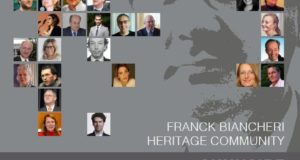Scénario A (currently, the official scenario) : The bureaucratic Temptation – Integration in 2004
Agenda: Basing the process of enlargement on the same model as the Euro, this very bureaucratic approach relies on the past experiences of European integration, of legal and administrative up-grading, with a view to turn the candidate-countries into “standard” European member-states. Structured along the lines of a short-term agenda (2002-2004 + various sectoral transition periods), it disregards completely the democratic factor and perpetuates the administrative monopoly over the European construction ; while taking for granted that the European construction has an inherent capacity to find in time of crisis the solutions it cannot find beforehand (institutional problems namely).
Since it disregards the political nature of EU enlargements, this scenario proposed in the first place to fix a number of application-criteria, as well as some individualised and « objective » agendas. By the end of 2001, confronted to the impossibility of implementing such an objectivity, and facing growing political requirements, it turned towards a more global approach, so-called « Big-Bang ».
Vectors : This scenario is conceived and carried by the EU and candidate administrations which find in it their interest, and firmly believe the process is merely a technical issue. The direct interest of the civil servants in charge of negotiating the application for the candidate-states (expecting positions in Brussels, Luxembourg or Strasbourg once the application achieved) converge with that of certain parts of the European administration, not particularly in favour of the EU tendencies to democratisation. The EU business circles push for a rapid extension of a single market for obvious profit-related reasons. In many member-states, the political leaders are trapped amidst their numerous promises and the growing duplicity of their speech, supporting enlargement on the one hand while raising numerous obstacles to it on the other hand.
Risks / Problems : The risks lying underneath this scenario are many:
![]() Risk of a general institutional blocking (until today, no solution to the question of a common management with 25-30 members has been found)
Risk of a general institutional blocking (until today, no solution to the question of a common management with 25-30 members has been found)
![]() Risk of a major conflict between this scenario and the democratic aspirations in the EU (in this scenario, EU democratisation is made “soluble” in enlargement)
Risk of a major conflict between this scenario and the democratic aspirations in the EU (in this scenario, EU democratisation is made “soluble” in enlargement)
![]() Risk of rejection by the public opinion (likely to result in compromising not only the scenario itself, but enlargement as a whole).
Risk of rejection by the public opinion (likely to result in compromising not only the scenario itself, but enlargement as a whole).
Scénario B : The pragmatic Illusion – Integration in 2004 and political construction of EuroLand from 2002 onwards
Agenda : Considering the facts in 2002, i.e. all the promises made to the candidate-countries by the EU in the past years, as well as the will of the leaders in the candidate-states to be able to capitalize on rapid progresses ; but also acknowledging that nothing is yet ready for the EU to welcome new members without running the risk of a complete stop in the whole process of integration and that the public opinions in EuroLand are not ready to reconsider the increased integration the Euro has suddenly imposed on them, the political leaders of EuroLand could initiate a process (under the pressure of their opinions) aimed at endowing EuroLand with an integrated and strong political structure (executive and legislative) by the end of 2003; in parallel to this, they would commit themselves to respect a “big-bang”-type short-term integration agenda (including all candidates but Turkey, Cyprus and maybe the Baltic states).
Vectors : This scenario is essentially a product of political leaders and of those components of the European administrative system dedicated to maintain the dynamism of European integration. For the political leaders, those in the EU and much as those in the candidate-states, this scenario has a great advantage, and that is that they « save face » and can allege that promises were kept. For a large number of citizens, namely in the candidate-countries, the difference between Scenario A and B will be hardly perceptible.
Risks / Problems :
![]() Risk of skidding towards scenario A and towards its dangers if the countries of EuroLand are not able to initiate a fast political integration
Risk of skidding towards scenario A and towards its dangers if the countries of EuroLand are not able to initiate a fast political integration
![]() Problems of conception and institutional organisation in EuroLand and in the EU
Problems of conception and institutional organisation in EuroLand and in the EU
![]() Hardships for the existing European institutions.
Hardships for the existing European institutions.
Scénario C : The historical Responsibility – Postponing the integrations to 2007 in the « Big-Bang » style (Turkey not included)
Agenda : Acknowledging on the one hand that the EU did not get seriously prepared to enlargement ; on the other hand that candidate-countries are neither ready to integrate within the 2/3 next years (stopping the “fool’s game” that has been played in the last decade), and becoming aware of the historical responsibility underlying the question of enlargement, a few political leaders in the EU and in the candidate-states (3 or 4 in total) propose to adjourn the application process to 5 years later so that the two parties get better prepared.
The vectors : The Euro and its potential of mobilisation, the Convention, the IGC and the 2004 European election, can appear as as many steps for the transformation of the EU into an entity capable of perpetuating the European construction with 25-30 member-states. EU and candidate-states’ citizens are ready to face the process and its consequences.
Risks/Problems :
![]() In concrete terms : none, since in reality neither the EU not the candidate-states are ready today ; and since additional time would surely enable everyone to get better prepared.
In concrete terms : none, since in reality neither the EU not the candidate-states are ready today ; and since additional time would surely enable everyone to get better prepared.
![]() In political terms, this scenario requires outstanding political leadership on the part of a few decision-makers from the EU and the candidate-countries. Or a great lucidity on the political risks (electoral ones namely within the EU) underlying a speedy enlargement.
In political terms, this scenario requires outstanding political leadership on the part of a few decision-makers from the EU and the candidate-countries. Or a great lucidity on the political risks (electoral ones namely within the EU) underlying a speedy enlargement.


 LEAP2040 Toutes les informations et archives Europe2040
LEAP2040 Toutes les informations et archives Europe2040
